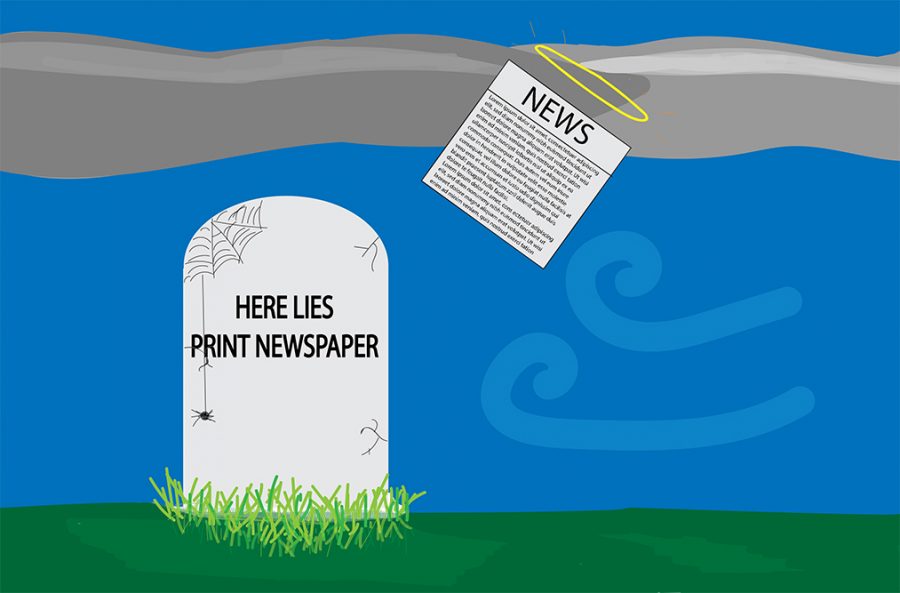A persistent favor in print newspaper
Kaitlyn Zellner and Ellie Coulston
Fresh newspapers, coming straight off the printing press, no longer have the same appeal as the easy access of the Internet.
March 5, 2019
The age of traditional paper and ink newspapers have been taken over by screens and convenience of accessible technology. Fresh newspapers, coming straight off the printing press, no longer have the same appeal as the easy access of the Internet. Nowadays people love to get their news from the comfort of their own home. For many, opening the door to get the daily paper off the driveway has become too much work when compared to on-line media.
Print journalism has diminished greatly in recent years as technology has progressed further and further, and the public just can’t get enough of it.
But for some people, much like how certain individuals still prefer physical books and vinyl records, over digital books and download-able music, print journalism is not quite dead yet. I believe that it will last a long time, due to being raised in a home that always used newspapers.
I would rather flip through a real newspaper and give it my undivided attention than scroll on a website, indifferent to important events occurring.
While newspapers that people hold in their hands and physically turn the pages are no longer the norm, there will always be some individuals rebelling from the status quo. Print journalism will continue to draw in the few that disapprove of the way technology is taking over the world.
Some are aware of the effect phones and computers are having on our social skills and are drawn to something more real.
The New York Times is pushing the digital news to make up for the lack of print being sold. The Times has nearly 2.5 million digital only subscribers and that makes the majority of their money.
Broadcast journalism has become much more popular in media and society in 2018. With the click of a button, people can know exactly what’s happening around them. To keep themselves in business, companies widely known for their print publications are resorting to writing stories on-line and publishing everything onto a website.
Around 23% of Americans still read newspapers, but this number will continue to dwindle. However, I don’t think it will ever disappear completely, much like how some people choose to still use physical media CD’ or vinyls for their music. Even though they are outdated and there are more advanced options, print newspapers still have appeal, and will always be used by some.
Additionally, the numerical value of print journalism is also more expensive than digital. The cost of making the paper can be pricey along with the cost of distribution. Printing materials are imported overseas, and this causes print journalism to be much more expensive than broadcast journalism. Digital is cheaper, more convenient and fast, but it still doesn’t compare to the positives of print journalism. Local newspapers promote local businesses and help keep companies on their feet. Print newspapers can never be revoked, and can be treasured for a long time. Broadcast media can be taken aback by the writer, and hidden from public view.
I personally don’t like reading stories and getting my news from on-line sources and will always read print journalism, and I don’t think I am alone in this.
Other people are with me in disagreeing with the rapid increase of on-line media. I think that print journalism will increase in the future, and if it does not, this medium of information sharing will never die off completely.
While the current trend for news sources has proven to digital, the publics preferences are constantly changing. On-line news may be the more convenient and intriguing option for today’s audience, but it will not always be this way. I believe that print journalism will soon make its way back into the limelight and have its comeback one day.










